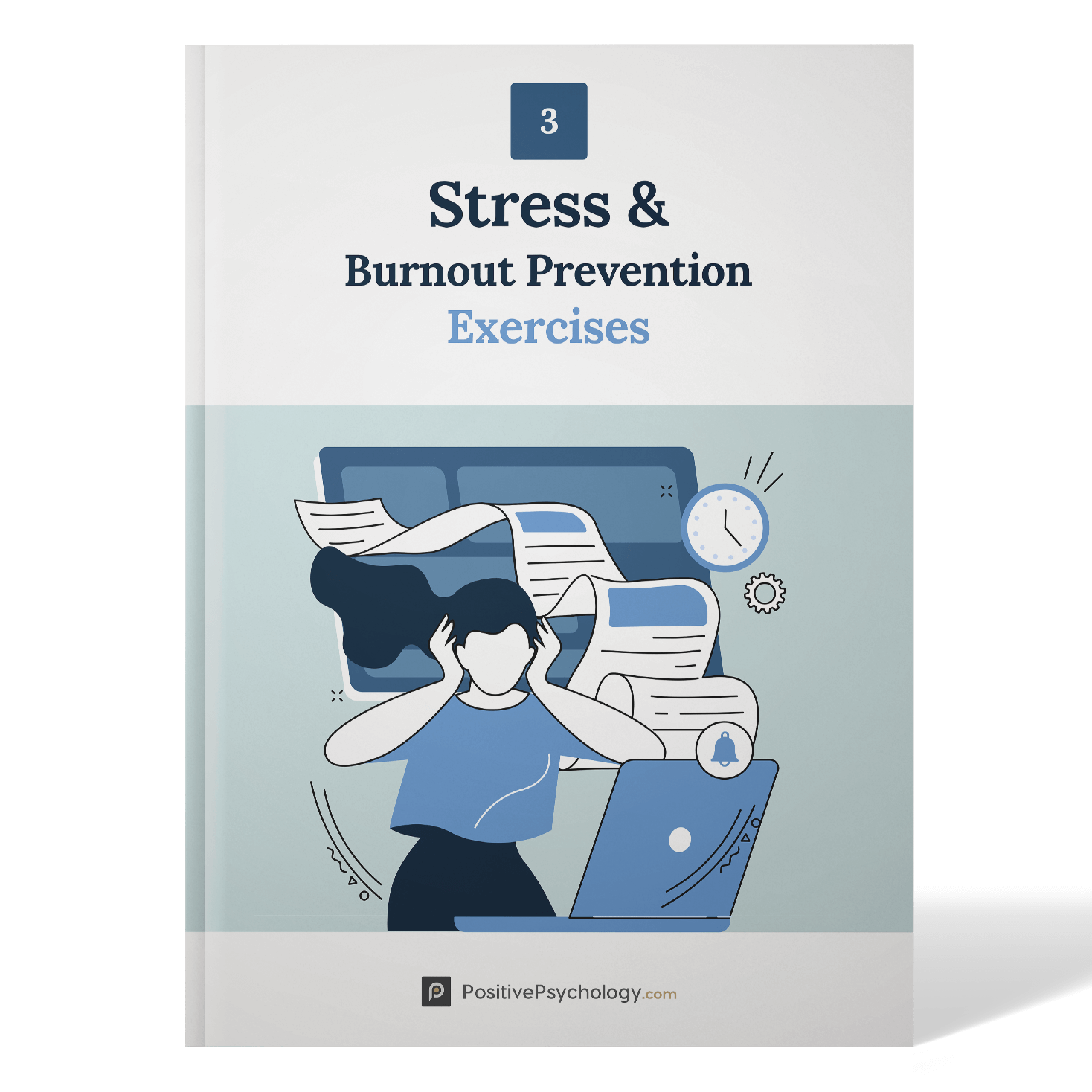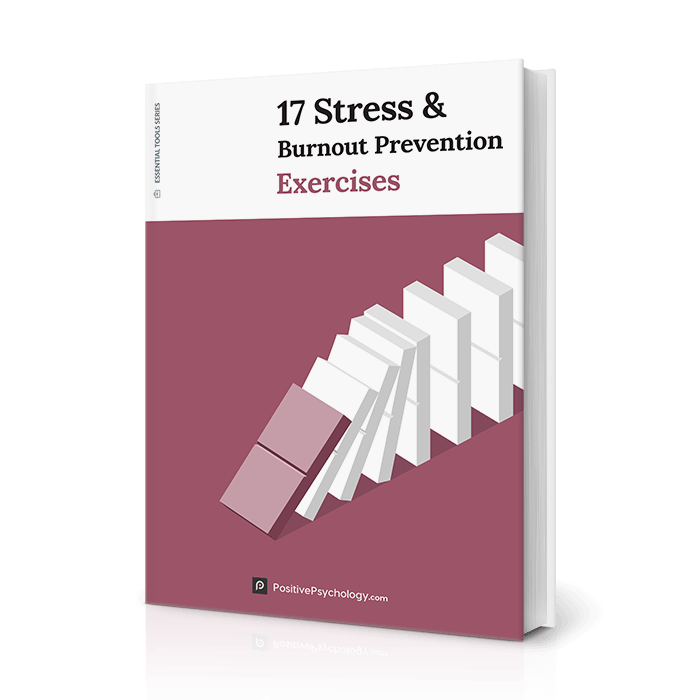What Is Burnout? 16 Signs and Symptoms of Excessive Stress
 Feeling stressed, tired, or anxious about work is not unusual, but burnout can cause decreased physical and psychological health.
Feeling stressed, tired, or anxious about work is not unusual, but burnout can cause decreased physical and psychological health.
Specifically, individuals who report experiencing burnout are:
- 63% more likely to take a sick day
- 23% more likely to visit the emergency room.
Employees experiencing regular burnout are also less likely to perform well. For example,
- They are less likely to approach their superiors about how to improve their performance.
- They’re 13% less confident in their job performance.
- They’re almost three times more likely to leave their jobs.
How common is burnout? In a 2020 survey, Gallup reported that when asked how often participants experienced burnout:
- 48% answered sometimes.
- 21% answered always.
Such statistics only confirms how serious and prevalent this experience is. In this post, we will explore more about the phenomenon of burnout, what it is, and how it manifests.
Before you continue, we thought you might like to download our three Stress & Burnout Prevention Exercises (PDF) for free. These science-based exercises will equip you and those you work with, with tools to manage stress better and find a healthier balance in your life.
This Article Contains:
- What Is Burnout & Why Does It Happen?
- 16 Symptoms & Signs of Burnout
- Can Burnout Make You Physically Sick?
- Effects on Life & Relationships
- Anxiety, Stress, & Burnout: A Vicious Cycle Explained
- Burnout vs Depression
- Compassion Fatigue: Burnout in Helping Professions
- Psychological Diagnosis: Is Burnout a Disorder?
- Best PositivePsychology.com Burnout Prevention Resources
- References
What Is Burnout & Why Does It Happen?
Many factors contribute to burnout. But first, let’s understand the definition and look at possible causes.
Defining burnout
Burnout is an occupational phenomenon where employees experience a mix of physical and psychological symptoms that result in decreased job satisfaction and productivity (Bridgeman, Bridgeman, & Barone, 2018).
Occupational burnout was first recognized in the mid-70s (Freudenberger, 1974) among healthcare professionals. Nowadays, burnout is not limited to only healthcare professionals, but can occur in any industry.
The World Health Organization (2019) defines burnout as “a syndrome conceptualized as resulting from chronic workplace stress that has not been successfully managed.”
Causes of burnout
Burnout can occur for several reasons. However, poorly managed occupational stress has been recognized as the primary cause (Bridgeman et al., 2018; World Health Organization, 2019).
Other factors contribute to work-related stress, which in turn, contribute to burnout (Edmund, 2019; Gallup, 2020). These include the following:
Unrealistic work expectations
Unrealistic work expectations include an unmanageable workload, unrealistic deadlines, and unrealistic time pressure. Employees who are expected to perform consistently for long periods under unrealistic deadlines are more likely to experience burnout.
The number of tasks that employees are expected to complete also contributes to an unrealistic workload.
Micromanagement
Employees who feel like they have no control over their environment, tasks, or time are more likely to experience burnout.
Poor instructions
Poor instructions also includes poorly defined tasks and unclear communication from employers/managers. When employees work in environments where instructions and tasks are unclear, they are more likely to suffer from burnout.
Unclear instructions can lead to unrealistic work expectations and micromanaging because employers do not clearly explain what they expect of their employees, resulting in multiple iterations of work without an apparent end. Employees have to work hard to figure out what exactly employers expect from them, and this increases feelings of anxiety and exhaustion.
Isolation
Employees benefit from socializing with their peers, and this can lead to feelings of support. Without regular contact with peers, employees may feel like they are alone.
Lack of support and unfair treatment
Employees who feel like their managers do not support them or treat them unfairly are at higher risk of burnout.
16 Symptoms & Signs of Burnout

Symptoms
The original symptoms described by Freudenberg (1974) were based on what he observed among staff members at the clinic where he worked.
Since then, however, the symptoms have been further refined and are no longer limited to only health professionals.
This list of symptoms is based on what Freudenberger (1974) first observed.
The physical symptoms include:
- Feeling exhausted
- Unable to recover from a common cold
- Frequent headaches
- Frequent gastrointestinal problems
- Sleep disturbances
- Shortness of breath
The behaviors include:
- Irritability
- Heightened emotional responses (quick to cry, quick to anger)
- Suspicious and paranoid about colleagues
- Substance abuse
- Stubbornness, rigid thinking, and unwillingness to listen to other people
- Negative attitude
- Appears depressed
Three dimensions of burnout
The symptoms of burnout commonly fall into the following three dimensions (Maslach, Jackson, & Leiter, 1996; World Health Organization, 2019):
- Feelings of exhaustion or energy depletion
- Feeling increasingly distant/negative/cynical about one’s job
- Reduced professional efficacy/decreased self-evaluation of output/performance
Signs of burnout
Employees who experience burnout will initially primarily complain of exhaustion. This exhaustion may be referred to as fatigue, tiredness, or feeling low on energy. It appears unshakeable. The fatigue is chronic (i.e., long term) and continuous.
Next, employees suffering from burnout will appear pessimistic about their work. Their pessimism can manifest in various ways. For example, they may adopt an overtly negative view of their work. Their pessimism can be less overt and more subtle; for example, they may appear unmotivated, disinterested, or uncommitted.
As a result, employees will report feeling despondent about their own performance and output in the workplace.
Other signs and symptoms of burnout are the side effects of overwhelming fatigue. Employees may seem disorganized, struggle to pay attention, and appear forgetful. They may come across as irritable, anxious, or depressed. They may turn to substances or medications to help them cope.
Finally, they may experience physiological symptoms because of stress, such as headaches, stomach problems, or cardiovascular problems such as a racing heart.
How symptoms manifest can differ from one person to the next. For example, some may experience restless sleep, while others may have a sore jaw from grinding their teeth.
Burnout is the result of occupational stress; if the cause of the stress is not work related, then it is unlikely to result in burnout.
Ultimate Burnout Guide
This Ultimate Burnout Guide illustrates the signs and symptoms of burnout with real-life examples. Not only that, the guide includes a lot of research, with recommendations on how to prevent it.
Can Burnout Make You Physically Sick?
People who experience burnout are also more likely to go to the doctor and the emergency room (Gallup, 2020). Some symptoms of burnout are physiological (Freudenberger, 1974). For example, employees who experience burnout report headaches, stomachaches, other gastrointestinal problems, and, sometimes, a racing heart rate.
Employees who experience burnout are also more likely to engage in substance abuse (especially alcohol). There is some evidence that burnout can affect men and women differently. Men are more likely to experience cardiovascular illnesses, whereas women are more likely to experience musculoskeletal problems (Ahola, 2007).
Stress, which is the underlying mechanism of burnout, can make you physically ill. Chronic or long-term stress can increase the risk of heart disease and infection (Kivimäki et al., 2006) and increase the risk of Type-2 diabetes and infertility (Toker, Shirom, Shapira, Berliner, & Melamed, 2005).
Stress can also result in poor-quality sleep, which can affect health by increasing the risk of heart disease and diabetes (Ayas et al., 2003). Increased levels of stress increase the body’s vulnerability to other illnesses (Kivimäki et al., 2006). Experiencing high levels of stress can prolong the time that it takes to recover from a minor ailment such as a cold (Kivimäki et al., 2006).
In very serious cases, chronic burnout increases the risk of death by 35% (Ahola, Väänänen, Koskinen, Kouvonen, & Shirom, 2010).
Effects on Life & Relationships

Remember, burnout results from occupational stress, and people who are more stressed may get involved in more conflict.
An abusive work environment can seep into family life. There is some evidence that employees who work in an abusive environment are more likely to engage in hostile behavior at home (Hoobler & Brass, 2006; Tepper, 2000).
The association between relationships and burnout is not unidirectional. Good-quality relationships can act as a buffer against burnout (Fernet, Gagné, & Austin, 2010). Positive relationships with superiors and colleagues are especially protective because they increase work motivation and job satisfaction (Fernet et al., 2010).
Occupational stress is also positively associated with relationship conflict (Friedman, Tidd, Currall, & Tsai, 2000). Specifically, employees who experienced higher levels of work-related stress also experienced higher levels of relationship conflict and higher levels of task conflict.
However, the relationship between stress and relationship conflict was moderated by the type of conflict management style that employees used.
Employees who avoided conflict were more likely to be stressed, whereas employees who tried to problem solve were less likely to feel stressed (and consequently experienced less conflict).
Burnout Prevalence: A Look at Its Rate
Freudenberger (1974) first observed burnout among healthcare professionals at clinics. Since then, a great deal of research has measured the prevalence of burnout among healthcare professionals, including doctors, nurses, and psychologists.
It has long been recognized that the prevalence rate varies in the literature. These differences are due to how burnout is measured and defined. For example, prevalence rates for teachers can be as high as 30%, versus 10% for doctors and dentists (Weber & Jaekel-Reinhard, 2000).
In 2018, Rotenstein et al. authored a meta-analysis of the prevalence rate of burnout among physicians. The meta-analysis included 182 studies from 45 different countries, with a combined total of 109,628 participants.
Part of the difficulty with estimating the prevalence of burnout was that different studies used different definitions, measurements, and cut-off scores for burnout. These differences complicated the findings of the meta-analysis.
From this meta-analysis, the prevalence rate was estimated as follows:
- In studies where burnout was defined as a notable score on only one of the three dimensions (exhaustion, depersonalization, or reduced self-evaluation), the prevalence rate ranged between 25.0% and 69.9%.
- In studies where burnout was defined as a notable score on only two of the three dimensions, the prevalence ranged between 19.5% and 28.9%.
- In studies where burnout was defined as a notable score on all three dimensions, the prevalence ranged between 2.6% and 11.8%.
Anxiety, Stress, & Burnout: A Vicious Cycle Explained

Burnout is caused by situational factors, such as the work environment, and individual factors, such as the personality of the employee (Bühler & Land, 2003).
For example, employees who score high on measures of perfectionism and neuroticism are more likely to experience burnout (Bakker & Costa, 2014). The reason for this is that these types of employees rely on unproductive and unhelpful coping mechanisms when faced with workplace stress (Bakker & Costa, 2014).
Indeed, employees who relied on avoidant conflict resolution strategies were more likely to experience work-related stress when compared to employees who took a problem-solving approach (Friedman et al., 2000).
Furthermore, depression and burnout are correlated, and anxiety and depression are correlated. This suggests that there should be a correlation between anxiety and burnout. Employees who experience burnout do report higher levels of psychological problems such as anxiety and depression (Ahola, 2007; Peterson et al., 2008) and are more likely to rely on substance abuse (Ahola, 2007).
Corrigan, Holmes, and Luchins (1995) found evidence of a medium-sized relationship between anxiety and depression. Schonfeld and Bianchi (2016) showed that teachers who were experiencing burnout were more likely to have a history of depression and anxiety and to be currently taking antidepressant and anti-anxiety medication, respectively, than teachers who were not burned out.
Some researchers argue that people with high trait anxiety are at higher risk of developing anxiety symptoms in response to occupational stress (Koutsimani, Montgomery, & Georganta, 2019). Employees with high levels of trait anxiety are more likely to overcommit to their work and experience higher job demands, such as workload and time pressure (Mark & Smith, 2012).
In summary, people with high trait anxiety scores, high perfectionism scores, and high neuroticism experience more stress at work. This is partly because of how they respond to stress, their coping mechanisms, and how they resolve conflicts. Together, these variables increase the risk of burnout.
However, burnout itself is highly correlated with depression and anxiety and encourages poor coping behaviors such as alcohol dependence.
As a result, employees do not get the opportunity to ‘reset’ and constantly feel stressed.
Burnout vs. depression – how to tell the difference
Burnout vs Depression
Burnout and depression are similar.
Sometimes, people who are suffering from burnout display symptoms of depression. The difference is that the ’cause’ of the unmanaged stress that resulted in burnout is due to work, rather than the multitude of other factors that can also result in depression (Bianchi, Boffy, Hingray, Truchot, & Laurent, 2013).
So is burnout just another name for depression, but one that is limited to the workplace?
Some authors argue that the nosology of depression and burnout is unclear. The variety of symptoms and lack of clarity around the exact definition demonstrate how burnout is a hazy concept (Weber & Jaekel-Reinhard, 2000).
Bianchi et al. (2013) argue that burnout and depression should not be considered two separate psychological constructs. They showed that when comparing the symptoms between patients who experienced major depression and burned-out employees, there was little difference between these two groups. These two groups, however, both displayed higher depression scores than a control group.
The argument that the symptomatology is the same for burnout and depression has been made in later papers (Bianchi, Schonfeld, & Laurent, 2015).
The primary difference between burnout and depression is that burnout arises from occupational stress. Bianchi et al. (2015) argue, however, that it is unusual for an illness to be restricted to only one particular domain. Specifically, they argue that depression is depression, regardless of the circumstances from which it arises.
This is further complicated by the tools used to measure burnout, since they specifically refer to the job environment rather than general daily activities.
Compassion Fatigue: Burnout in Helping Professions
A particular type of burnout that is often experienced by helping professionals is compassion fatigue (Figley, 2002). Compassion fatigue is prevalent among helping professionals, such as nurses and psychologists, who work with patients who are diagnosed with chronic illnesses.
Professionals who experience compassion fatigue are constantly re-exposed to the trauma and stress of a particular event but through the experiences of their clients/patients (Figley, 2002). As a result, professionals aim to be empathetic and compassionate toward their patients, while re-experiencing and re-assessing trauma through them.
Figley (2002) argues that this tension between stress and compassion leads to secondary traumatic stress, which results in compassion fatigue.
Compassion fatigue is different, however, from countertransference or burnout.
Countertransference is when a therapist has an overly strong attachment to a client and experiences events through them as a result. It also includes over-identifying with the client.
In contrast to countertransference, compassion fatigue results from feeling empathy toward the client and their situation. The client’s situation may be a reminder of what the professional has gone through. Compassion fatigue is not because of an attachment.
As defined previously, burnout is a feeling of extreme exhaustion from poorly managed stress. In contrast with therapist burnout, compassion fatigue is more specific since it is triggered through specific traumas and experiences of specific clients. Compassion fatigue is not necessarily a blanket response to ‘work.’
Psychological Diagnosis: Is Burnout a Disorder?

The neural pathways underlying burnout have not been established, and it has similar overlapping features with depression (Freudenberger, 1974).
Most importantly, however, burnout is not recognized by the American Psychological Association as a diagnosis in the Diagnostic and Statistical Manual of Mental Disorders.
The World Health Organization (2019) recognizes burnout as an occupational experience, and they include it in the International Classification of Diseases (ICD code Z73.0). However, burnout is not considered a medical illness. Instead, burnout is grouped with other factors that are not illnesses or health conditions but that result in medical consultation.
Best PositivePsychology.com Burnout Prevention Resources
Our free Stress & Burnout Prevention Exercises Pack features three handpicked tools from the Positive Psychology Toolkit©. These exercises can help you identify domains in which clients may be at risk of suffering from stress and burnout, as well as the potential benefits of stress for growth.
- Energy Management Audit
This brief, 16-item assessment helps clients assess their energy levels across the physical, mental, emotional, and spiritual domains. Upon completion, clients will have gained clear insight into their energy strengths and deficits, building awareness of these energy levels’ effects on daily functioning. - Strengthening The Work-Private Life Barrier
This exercise aims to help clients identify the behaviors, beliefs, and conditions that create metaphorical “holes” in the barrier between work and private life. In doing so, clients can better develop a solid barrier between their work and private life to help them restore a healthy balance between the two. - The Stress-Related Growth Scale
This 50-item assessment tool assesses positive outcomes following a stressful event (i.e., stress-related growth). By reflecting on their results, clients can consider the positive benefits of challenging experiences for their relationships, thinking, and coping.
You can access these tools for free by downloading our Stress & Burnout Prevention Exercises Pack.
If you’re looking for more science-based ways to help others manage stress without spending hours on research and session prep, this collection contains 17 validated stress management tools for practitioners. Use them to help others identify signs of burnout and create more balance in their lives.
Besides tools, we have a wide selection of excellent articles aimed at reducing stress and improving your work environment. Here are a few suggestions as a starting point:
- Positive Psychology in the Workplace: Thank God it’s Monday
- Resilience in the Workplace: How to Be More Resilient at Work
- What Is Job Crafting? (Incl. 5 Examples and Exercises)
- Intrinsic Motivation in the Workplace: 5 Techniques to Motivate Employees
- 16 Stress Management Activities and Worksheets to Help Clients Beat Stress
A Take-Home Message
Diagnosing burnout is not easy. It resembles other psychological illnesses such as anxiety and depression.
The challenge for clinicians is to distinguish between these syndromes.
One factor that distinguishes burnout from other illnesses is that burnout is a response to occupational stress. Therefore, clients who are currently unemployed cannot suddenly experience burnout.
With this in mind, however, the experiences of stress and depression are not limited to the workplace. For example, a stay-at-home mom can also experience stress, depression, and physical illness.
Regardless of whether the client is presenting with burnout or similar symptoms resulting from nonoccupational circumstances, the underlying mechanism – stress – can have very serious consequences.
Learning to recognize the symptoms of stress can better protect employees and clients before it becomes unmanageable and unhealthy.
To do so, use the tools provided and browse through our positive psychology articles to give your clients the help they need.
We hope you enjoyed reading this article. Don’t forget to download our three Stress & Burnout Prevention Exercises (PDF) for free.
- Ahola, K. (2007). Occupational burnout and health (Doctoral dissertation). University of Helsinki, Finland.
- Ahola, K., Väänänen, A., Koskinen, A., Kouvonen, A., & Shirom, A. (2010). Burnout as a predictor of all-cause mortality among industrial employees: a 10-year prospective register-linkage study. Journal of Psychosomatic Research, 69(1), 51–57.
- Ayas, N. T., White, D. P., Al-Delaimy, W. K., Manson, J. E., Stampfer, M. J., Speizer, F. E., … Hu, F. B. (2003). A prospective study of self-reported sleep duration and incident diabetes in women. Diabetes Care, 26(2), 380–384.
- Bakker, A. B., & Costa, P. L. (2014). Chronic job burnout and daily functioning: A theoretical analysis. Burnout Research, 1(3), 112–119.
- Bianchi, R., Boffy, C., Hingray, C., Truchot, D., & Laurent, E. (2013). Comparative symptomatology of burnout and depression. Journal of Health Psychology, 18(6), 782–787.
- Bianchi, R., Schonfeld, I. S., & Laurent, E. (2015). Is it time to consider the “burnout syndrome” a distinct illness? Frontiers in Public Health, 3, 158.
- Bridgeman, P. J., Bridgeman, M. B., & Barone, J. (2018). Burnout syndrome among healthcare professionals. The Bulletin of the American Society of Hospital Pharmacists, 75(3), 147–152.
- Bühler, K. E., & Land, T. (2003). Burnout and personality in intensive care: an empirical study. Hospital Topics, 81(4), 5–12.
- Corrigan, P. W., Holmes, E. P., & Luchins, D. (1995). Burnout and collegial support in state psychiatric hospital staff. Journal of Clinical Psychology, 51(5), 703–710.
- De Dreu, C. K., Van Dierendonck, D., & Dijkstra, M. T. (2004). Conflict at work and individual well-being. International Journal of Conflict Management, 15(1), 6–26.
- Edmund, M. (Ed.) (2019) Beating burnout. Quality Progress, 52(11), 10–12.
- Fernet, C., Gagné, M., & Austin, S. (2010). When does quality of relationships with coworkers predict burnout over time? The moderating role of work motivation. Journal of Organizational Behavior, 31(8), 1163–1180.
- Figley, C. R. (2002). Compassion fatigue: Psychotherapists’ chronic lack of self care. Journal of Clinical Psychology, 58(11), 1433–1441.
- Friedman, R. A., Tidd, S. T., Currall, S. C., & Tsai, J. C. (2000). What goes around comes around: The impact of personal conflict style on work conflict and stress. International Journal of Conflict Management, 11(1), 32–55.
- Freudenberger, H. J. (1974). Staff burn-out. Journal of Social Issues, 30(1), 159–165.
- Gallup (2020). Gallup’s perspective on employee burnout: Causes and cures. Gallup. Retrieved January 12, 2021, from https://www.gallup.com/workplace/282659/employee-burnout-perspective-paper.aspx
- Hoobler, J. M., & Brass, D. J. (2006). Abusive supervision and family undermining as displaced aggression. Journal of Applied Psychology, 91(5), 1125–1133.
- Kivimäki, M., Virtanen, M., Elovainio, M., Kouvonen, A., Väänänen, A., & Vahtera, J. (2006). Work stress in the etiology of coronary heart disease—A meta-analysis. Scandinavian Journal of Work, Environment & Health, 32(6), 431–442.
- Koutsimani, P., Montgomery, A., & Georganta, K. (2019). The relationship between burnout, depression, and anxiety: A systematic review and meta-analysis. Frontiers in Psychology, 10, 284.
- Mark, G., & Smith, A. P. (2012). Occupational stress, job characteristics, coping, and the mental health of nurses. British Journal of Health Psychology, 17(3), 505–521.
- Maslach, C., Jackson, S. E., & Leiter, M. P. (1996). Maslach burnout inventory. (3rd ed.). Consulting Psychologists Press.
- Peterson, U., Demerouti, E., Bergström, G., Samuelsson, M., Åsberg, M., & Nygren, Å. (2008). Burnout and physical and mental health among Swedish healthcare workers. Journal of Advanced Nursing, 62(1), 84–95.
- Rotenstein, L. S., Torre, M., Ramos, M. A., Rosales, R. C., Guille, C., Sen, S., & Mata, D. A. (2018). Prevalence of burnout among physicians: A systematic review. Journal of the American Medical Association, 320(11), 1131–1150.
- Schonfeld, I. S., & Bianchi, R. (2016). Burnout and depression: Two entities or one? Journal of Clinical Psychology, 72(1), 22–37.
- Tepper, B. J. (2000). Consequences of abusive supervision. Academy of Management Journal, 43(2), 178–190.
- Toker, S., Shirom, A., Shapira, I., Berliner, S., & Melamed, S. (2005). The association between burnout, depression, anxiety, and inflammation biomarkers: C-reactive protein and fibrinogen in men and women. Journal of Occupational Health Psychology, 10(4), 344–362.
- Weber, A., & Jaekel-Reinhard, A. (2000). Burnout syndrome: A disease of modern societies? Occupational Medicine, 50(7), 512–517.
- World Health Organization. (2019). Burn-out an “occupational phenomenon”: International classification of diseases. Retrieved from https://www.who.int/mental_health/evidence/burn-out/en/
Let us know your thoughts
Read other articles by their category
- Body & Brain (49)
- Coaching & Application (57)
- Compassion (26)
- Counseling (51)
- Emotional Intelligence (24)
- Gratitude (18)
- Grief & Bereavement (21)
- Happiness & SWB (40)
- Meaning & Values (26)
- Meditation (20)
- Mindfulness (45)
- Motivation & Goals (45)
- Optimism & Mindset (34)
- Positive CBT (28)
- Positive Communication (20)
- Positive Education (47)
- Positive Emotions (32)
- Positive Leadership (18)
- Positive Parenting (4)
- Positive Psychology (33)
- Positive Workplace (37)
- Productivity (16)
- Relationships (46)
- Resilience & Coping (36)
- Self Awareness (21)
- Self Esteem (38)
- Strengths & Virtues (31)
- Stress & Burnout Prevention (34)
- Theory & Books (46)
- Therapy Exercises (37)
- Types of Therapy (64)





What our readers think
This is noot justinteresting; instead it’s vital to know what affects us in the work place. Thank you for sharing these thoughts
A good overview of burnout in the workplace; however I have several patients presenting with domestic burnout, which was not alluded to. This is my term but includes burnout from juggling too many things day in, day out, without any break such as managing children, supporting a wife and running the household. For example, an exhausted husband comes home and has to attend to all the kids chores like homework, bathing, spending time with them, getting them ready for bed, fitting in cooking supper, going to the shops, giving his wife some time, sorting out finances or problems in the house etc. This continuous non-stop activity can lead to burn out, fatigue and breakdown as well as occupational burnout.
Many women especially single moms experience exactly the same issues outlined above. When feeling stretched in what feels like a million and one directions … it’s crucial to make time for joy. Having supportive friends .. therapist.. pets .. getting fresh air .. a good meal ..creative projects are essential to restoration of mental well-being..
Making a list of “to-do’s” is helpful but doesn’t have to be accomplished in one day.
These are meant as a reminder ..and if the deadline isn’t met “so be it”..I find that contacting the person or source (hard , I know) that your late in responding has been helpful in reducing stress/anxiety.
Most importantly, don’t beat yourself up and know your trying and doing your best!!